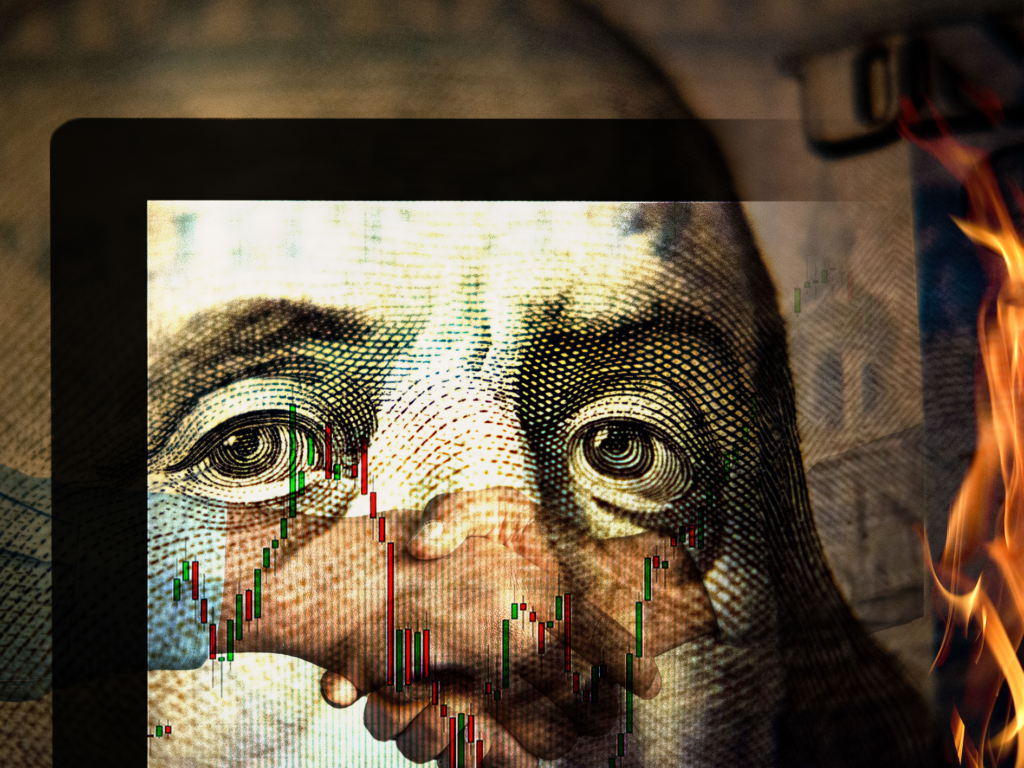
Many financial scholars use volatility as a standard to measure risk, but factors that are known and measurable may not be considered as true risks. Risks should be unforeseen events that occur suddenly and are not extensively contemplated by most investors. In recent weeks, forward-looking economists have begun discussing potential issues in the US private credit market, which lacks transparency and warrants analysis and monitoring.
Since the 2008 global financial crisis, regulatory authorities in various countries have tightened control over banks, leading them to be more cautious in lending. As of this March, household loans in the US accounted for only 66% of GDP, much lower than the 86% during the financial crisis. Banks have also reduced lending to small and medium-sized enterprises to achieve sufficient capital adequacy.
In an era of zero interest rates and abundant liquidity, private funds and individual investors have replaced banks as the main sources of loans for US small and medium-sized enterprises, resulting in an increasing amount of private debt. When loans are made by banks, transparency is relatively higher due to accounting disclosure requirements. However, once they become private debt, even regulatory agencies find it difficult to ascertain the actual market size.
Different research institutions estimate the size of the US private credit market to be around $1.3 trillion to $1.4 trillion, which is close to the $1.5 trillion size of the US high-yield bond market. The $1.4 trillion roughly accounted for about 5% of the US GDP for the first quarter of this year. This is relatively lower than the proportion of subprime mortgages relative to US GDP, which accounted for 8.7% in the second quarter of 2008 when the subprime crisis accelerated.
Although the private credit market lacks transparency, fortunately, there are several listed private credit investment funds whose annual reports provide valuable data and can represent the industry to some extent. Firstly, most private credit has floating interest rates, with spreads ranging from 3% to 8% depending on the business nature and risk of the borrowers. The estimated average spread is about 6%. In the current market conditions, the average interest rate of private debt is approximately 11%, which can hardly be considered low.
Another risk is that roughly half of the funds invested in private debt come from leveraged borrowing. While it may increase investors’ returns in good market conditions, it also brings risks. In the past 30 years, global interest rates have generally been trending downwards, particularly after the 2008 financial crisis, with US interest rates approaching zero. In such an environment, companies find it easier to afford interest costs, and bad debt ratios can easily remain at extremely low levels. However, on the other hand, it also means that most private credit investors have never experienced the pressure of rising interest rates.
Fortunately, small and medium-sized business loans typically come from only one to two private debt lenders, fewer than those involved in bank loans, which means less competition. On one hand, less competition allows for higher interest rates, on the other hand, it is also easier to restructure loans when the borrower faces cash flow issues. Therefore, the risk of bad debts is largely reduced. Additionally, private debt borrowers cover various industries, unlike subprime risks, which were heavily concentrated in the real estate industry. Currently, although risks in the private lending market are increasing, their potential impact may be lower than the subprime crisis.
Disclaimer
This document is based on management forecasts and reflects prevailing conditions and our views as of this date, all of which are accordingly subject to change. In preparing this document, we have relied upon and assumed without independent verification, the accuracy and completeness of all information available from public sources. All opinions or estimates contained in this document are entirely Zeal Asset Management Limited’s judgment as of the date of this document and are subject to change without notice.
Investments involve risks. Past performance is not indicative of future performance. You may lose part or all of your investment. You should not make an investment decision solely based on this information. Each Fund may have different underlying investments and be exposed to a number of different risk, prior to investing, please read the offering documents of the respective funds for details, including risk factors. If you have any queries, please contact your financial advisor and seek professional advice. This material is issued by Zeal Asset Management Limited and has not been reviewed by the Securities and Futures Commission in Hong Kong.
There can be no assurance that any estimates of future performance of any industry, security or security class discussed in this presentation can be achieved. The portfolio may or may not have current investments in the industry, security or security class discussed. Any reference or inference to a specific industry or company listed herein does not constitute a recommendation to buy, sell, or hold securities of such industry or company. Please be advised that any estimates of future performance of any industry, security or security class discussed are subject to change at any time and are current as of the date of this presentation only. Targets are objectives only and should not be construed as providing any assurance or guarantee as to the results that may be realized in the future from investments in any industry, asset or asset class described herein.
In respect of any discrepancy between the English and Chinese version, the English version shall prevail.



